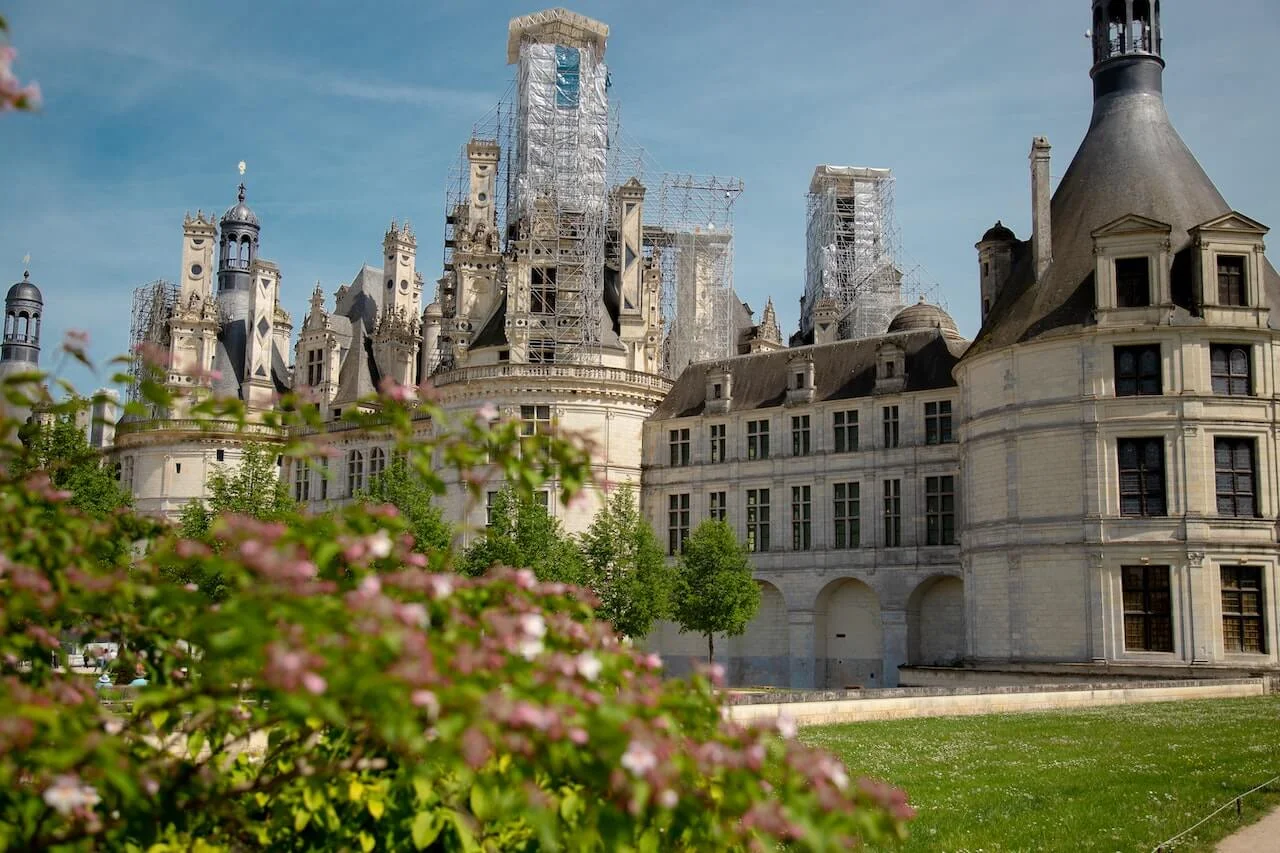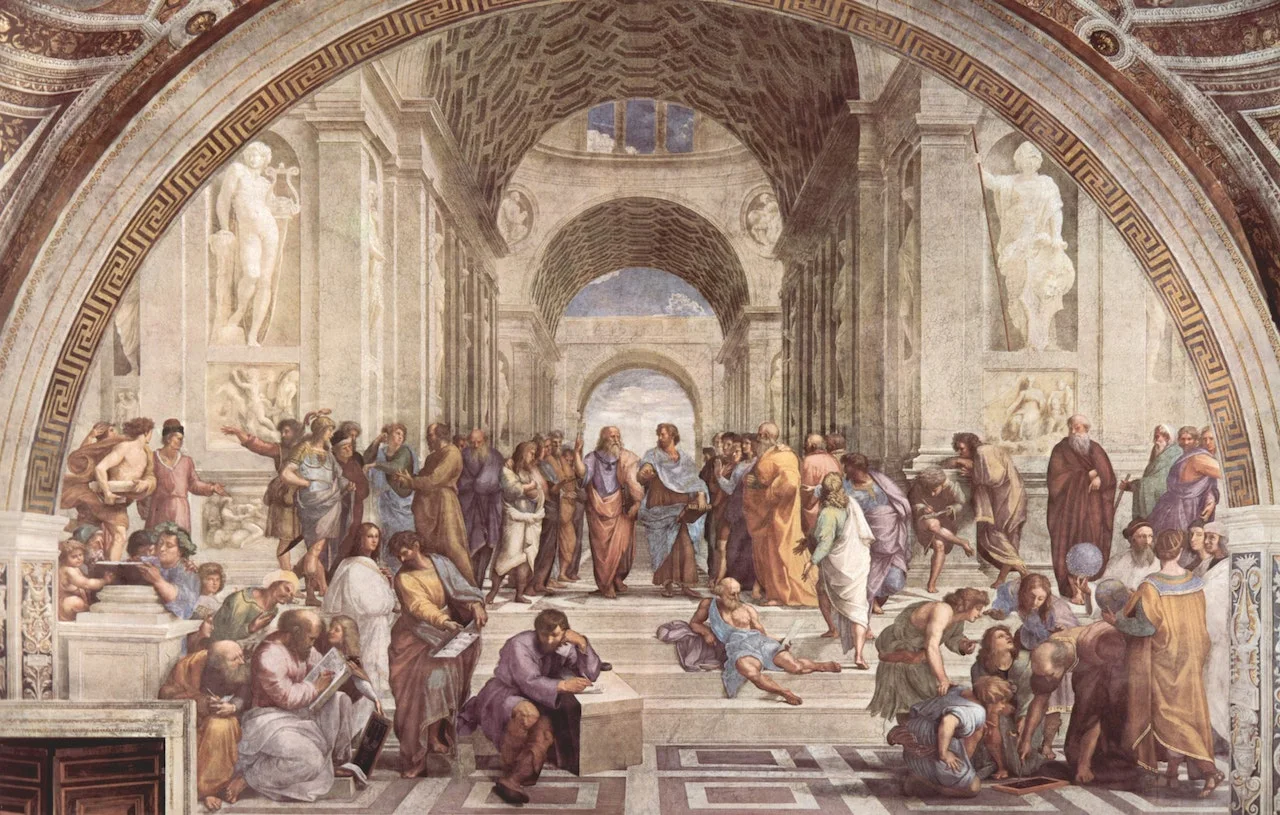Renaissance Architecture: Unveiling its Beauty and Majesty
What is Renaissance Architecture?
If you've ever been traveling in Europe, you've probably seen buildings that make you say, "Wow, that's fancy!" That fancy architecture is called Renaissance architecture, and it's a style that was popular during the Renaissance period in Europe (big surprise there).
Furthermore, Renaissance architecture is a captivating and influential architectural style that emerged in Europe during the 14th century. Known for its revival of classical forms and emphasis on harmony and proportion, Renaissance architecture has left an indelible mark on the world of design.
But what exactly is Renaissance architecture, and why is it so special? Well, for all art and architecture enthusiasts, you've come to the right place. In this comprehensive guide, we will delve into the origins, key characteristics, and historical context, and highlight famous pioneers and iconic examples of this architectural style.
 |
| Img. 1- Chateau Chambord, a remarkable Renaissance building in France, during restoration, Photo by Harper Swan |
Therefore, in this blog post today, we're going to break down everything you need to know about Renaissance architecture and why it's still relevant currently. So, grab your magnifying glass, and let's dive in!
Origins and Emergence: The Renaissance Architectural Revolution
Renaissance architecture had its roots in Italy, specifically in Florence, during the early 15th century. This architectural movement was part of a broader cultural revival known as the Renaissance, which celebrated the rediscovery of classical Greek and Roman art and culture. Architects of the time sought to break away from the Gothic and Romanesque styles that had dominated Europe for centuries.
The origins and emergence of Renaissance architecture mark a fascinating chapter in the history of design and creativity. To truly appreciate the significance of this architectural revolution, let's delve deeper into its birthplace, the cultural ferment of Florence, Italy, and the intellectual forces that sparked its emergence. Here, we delve into the fascinating origins and emergence of Renaissance architecture.
Italy: The Cradle of Renaissance Architecture
Italy, and particularly the city of Florence, played a pivotal role in the development of this architectural style. The city was a vibrant center of art, commerce, and intellectual exchange. It was in this dynamic environment that architects began to break away from the prevailing Gothic and Romanesque styles and seek inspiration from the classical world.
Embracing the Classical Revival
Central to Renaissance architecture was a profound appreciation for the classical ideals of ancient Greece and Rome. Architects of the time were not content with simply copying classical designs; instead, they sought to infuse these timeless principles with new life and innovation. This meant a return to the classical vocabulary of columns, arches, and domes, but with a fresh perspective.
Breaking Free from Tradition
It represented a departure from the Gothic and Romanesque styles that had long dominated Europe. Gone were the soaring spires and intricate ornamentation of the past. Instead, architects sought a rational, human-centered approach. They aimed to create spaces that were not only visually stunning but also functional and comfortable for their inhabitants.
The Intersection of Humanism and Geometry
At the heart of Renaissance architecture lay the spirit of humanism. This philosophical movement celebrated human achievement and potential, and it found expression in the built environment. Architects incorporated human scale and comfort into their designs, making buildings more accessible and welcoming. They also employed mathematical principles, such as the Golden Ratio, to achieve aesthetic perfection, embracing the harmony found in nature and the human form.
In summary, the origins and emergence of Renaissance architecture were characterized by a profound revival of classical ideals, a departure from architectural traditions of the past, and a commitment to innovation and human-centered design.
This movement laid the foundation for architectural masterpieces that continue to inspire and captivate us today. In the following sections, we will explore the distinctive characteristics and historical context, and highlight famous pioneers and iconic examples of this remarkable architectural style.
Characteristics of Renaissance Architecture
- Classical Influence: Renaissance architects drew heavily from classical Roman and Greek architecture. They embraced the use of columns, arches, and domes, applying them with newfound sophistication.
- Symmetry and Proportion: A hallmark of Renaissance architecture is the emphasis on symmetry and proportion. Buildings were meticulously designed to achieve harmony and balance.
- Humanism: The Renaissance period was characterized by humanism, a philosophical movement that celebrated human achievements and potential. This philosophy was reflected in the design of buildings, with an emphasis on human scale and comfort.
- Use of Geometry: Architects employed mathematical principles such as the Golden Ratio to achieve aesthetic perfection in their designs.
- Use of Classical Orders: Renaissance buildings often featured classical orders like Doric, Ionic, and Corinthian columns, showcasing their mastery of classical elements.
Keys of Interest:
- Classical influence, symmetry, and proportion were central to Renaissance architecture.
- Humanism and the use of geometry played pivotal roles in design.
- The classical orders were prominently featured in Renaissance buildings.
Renaissance Architecture in History: A Transformative Journey
The Renaissance era in Europe, spanning from the 14th to the 17th century, was a time of immense cultural and intellectual growth. This period witnessed the works of notable artists, thinkers, and architects, all contributing to the development of Renaissance architecture. It was a period of cultural revival and exploration and was closely linked to the broader Renaissance movement in art, literature, and science. (Img. 2)
 |
| Img.2- The famous painting: "School of Athens" by Raphael, a pioneer painter from the Renaissance era, Photo by Pixabay |
The history of Renaissance architecture is a captivating narrative that spans several centuries, leaving an indelible mark on the architectural landscape of Europe and beyond. This journey through time reveals the evolution, impact, and enduring legacy of this remarkable architectural style.
1- The Early Renaissance (14th to 15th Century)
The seeds of Renaissance architecture were sown during the 14th and 15th centuries, primarily in Italy. As noted earlier, this period witnessed a gradual shift away from the Gothic and Romanesque styles, as architects began to rediscover classical antiquity.
Filippo Brunelleschi:
Often credited as one of the pioneering architects of the early Renaissance, Brunelleschi's crowning achievement was the dome of the Florence Cathedral (Il Duomo). This awe-inspiring architectural feat showcased the revival of classical principles, particularly in the innovative self-supporting dome.
Leon Battista Alberti:
Alberti, a polymath of the Renaissance, penned the influential treatise "De re aedificatoria" (On the Art of Building). His architectural designs, such as the façade of the Church of Santa Maria Novella in Florence, embodied the Renaissance focus on proportion and classical forms.
2- High Renaissance (Late 15th to Early 16th Century)
The High Renaissance period witnessed the apex of Renaissance architecture. It was marked by a convergence of artistic brilliance and architectural innovation.
Andrea Palladio:
Andrea Palladio's work in the 16th century had a profound and lasting impact on architectural styles not only in Italy but also throughout Europe. His "Four Books on Architecture" became a cornerstone of architectural education. The Palladian style, characterized by balance, harmony, and the use of classical orders, found its epitome in Villa Rotonda.
St. Peter's Basilica:
Located in Vatican City, St. Peter's Basilica is a monumental example of Renaissance architecture. Designed by multiple architects, including Michelangelo and Gian Lorenzo Bernini, it stands as a testament to the enduring influence of this architectural style. Its grandeur, classical elements, and iconic dome remain iconic to this day.
 |
| Img.3- The Papal Basilica of Saint Peter in the Vatican City, Photo by Ryszard Zaleski |
Mannerism and Beyond (Late 16th to 17th Century)
As the Renaissance era progressed, architectural styles evolved into Mannerism, characterized by exaggerated proportions and whimsical details. This transition marked the transition from the High Renaissance to the Baroque period.
Baroque Architecture:
While the Baroque style eventually supplanted Renaissance architecture, it owed much of its development to the classical foundations laid by Renaissance architects. The grandiosity, drama, and ornate detailing of Baroque architecture were deeply rooted in the Renaissance's exploration of classical forms. Read more »
Legacy and Global Influence
The legacy of Renaissance architecture extended far beyond its Italian origins. It left an indelible mark on architectural styles worldwide, from Europe to the Americas and beyond. As European powers explored and colonized new territories, they brought with them the architectural principles and designs rooted in the Renaissance.
Influences in Europe:
Throughout the Renaissance and beyond, various European countries embraced Renaissance architectural principles in their own unique ways. The châteaux of the Loire Valley in France, for instance, bear the hallmarks of Renaissance design, as do many buildings in England and Spain.
Colonial Impact:
European colonial powers, including Spain and Portugal, introduced Renaissance architectural styles to their colonies in the Americas. This influence can be seen in the design of churches, government buildings, and city layouts in regions like Latin America and the Caribbean.
Points of Interest:
- The Renaissance was a period of cultural revival and exploration.
- Renaissance architecture flourished during the 15th and 16th centuries.
- It was closely linked to the broader Renaissance movement in art, literature, and science.
Renaissance architecture, born in the cultural crucible of Italy, transformed the way we think about design and aesthetics. Its enduring legacy can be seen in iconic structures around the world. With its emphasis on classical ideals, symmetry, and humanism, Renaissance architecture continues to inspire architects and captivate admirers, reminding us of the enduring power of timeless design principles. As we explore architectural styles, it's impossible to overlook the profound impact of Renaissance architecture on the built world.
.png)






